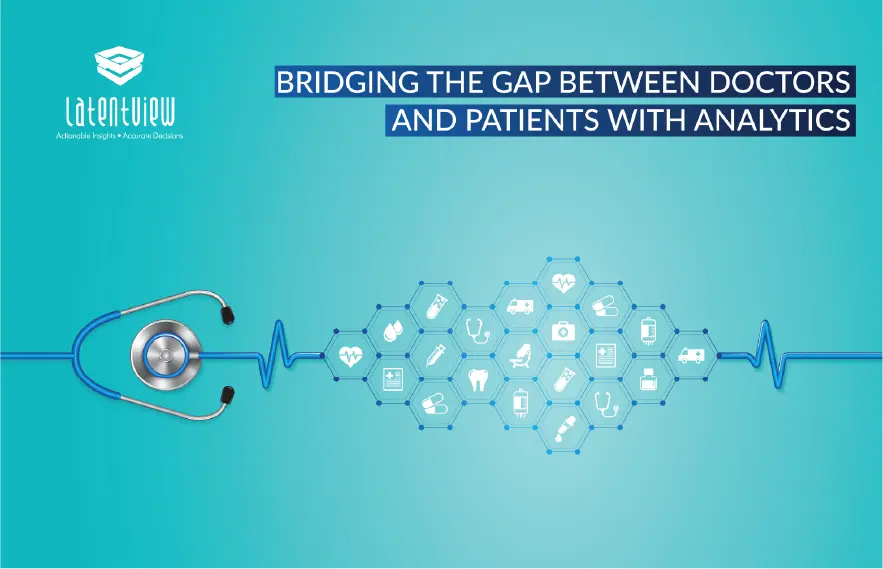The Covid-19 pandemic has swiftly brought the focus on health and safety back into the spotlight. Ever since the pandemic disrupted the world, people have been trying to be more health conscious, which is also reflected in the demand for doctor appointments growing significantly. Patients are shifting towards virtual healthcare services, considering the growing concerns about in-person visits. This change in the healthcare ecosystem creates an opportunity for healthcare businesses to leverage.
Online hospital appointment booking applications have gained immense traction after the onset of the pandemic, primarily because of the high demand to meet doctors, longer waiting times at hospitals, and the low in-person availability of physicians. The massive success of such applications has attracted significant investments. Eventually, this digitalization process creates more data concerning patients and doctors than ever. Advanced analytics converts these massive datasets into valuable insights, helping businesses end up in a win-win scenario for doctors and patients. This blog post highlights how advanced data analytics is helping businesses to overcome the pain points in online healthcare appointment portals.
Our expertise in handling data and providing actionable insights
Recently, at LatentView Analytics, we worked with a US-based online doctor appointment booking company. They help people book in-person and virtual doctor appointments online, and it has a marketplace business model with doctors on their supply side and patients on their demand side. This platform helps patients find in-network neighborhood doctors. Users can find their doctors of choice by any of the following keywords:
- Symptoms
- Specialty
- Doctor’s name
- Location
- Insurance
Major Challenges in online appointment booking applications
In spite of creating a doctor appointment facility at the fingertips of users, online appointment portals give rise to some unique challenges. Below are a few key problems faced by healthcare providers via such portals.
- No-shows – Data shows a significant percentage of no-shows where patients who book appointments randomly do not turn up at their scheduled time. This underutilizes the doctors’ availability and ruins consultation opportunities for other patients.
- Cancellations – Last-minute cancellations are becoming a nightmare in this online environment as the choice of canceling is becoming more disadvantageous to the doctors and genuine patients.
- Bad Users – Some perpetrators pretend as patients and misuse the online booking portals to get prescriptions for illegal drugs. It has become challenging for doctors and portals to differentiate between bad users and genuine patients.
Advanced Data Analytics is addressing the challenges of Online Appointment Portals
With the latest techniques in machine learning and advanced analytical capabilities, organizations can address the rising pain points in these online appointment portals.
- Forecasting Bookings, Cancellations, and No Shows – Using machine learning, we can develop forecasting models to understand the future bookings and cancellations for a given locality, thereby preparing for backup patients in case of a cancellation or no show.
- In our latest project, we used the FB-Prophet model for forecasting, which incorporated holiday and seasonal components, helping us find hidden patterns by aggregating and analyzing historical data. It allows us to be proactive instead of reactive.
- Predicting Fake Bookings – By studying the pattern of bad users and cancellations, we can now develop AI models to understand the pattern of fake bookings, thereby introducing verifications and quality check modules to avoid and reduce the instances of bad users.
- Clustering techniques are also used to classify and bucket users based on their booking patterns. This helps businesses segment users into different categories, designing campaigns and verification processes accordingly.
- Automated Anomaly Detection – On top of developing multiple BI dashboards and reports to monitor the day-to-day bookings, LatentView Analytics is now integrating automatic anomaly detection modules to get alerts and notifications when there is a deviation from the expected business patterns.
- Business users can also set benchmarks and targets to customize the alerts and notifications as per their need
How technology and Big Data are contributing to the advancement of Telehealth.
IoT in Patient Health Tracking and Predictive Analytics
The most significant use of big data in telehealth is identifying health issues before the conditions aggravate. This has become possible with the advent of wearable fitness trackers and other wearable health monitors that collect a patient’s real-time data. Applying analytics techniques to this IoT data will help doctors and healthcare providers monitor a patient’s vitals and track the patterns. Leveraging Analytics ensures that physicians will receive regular updates about their patient’s health status, which results in early detection of any abnormality. In addition, the data collected over time is used to predict possible future outcomes. Creating risk scores based on the data is vital for identifying individuals at elevated risks.
Health Data on the Cloud
The massive volume of health data has paved the way for the adoption of cloud computing. With a huge volume of patients’ data, healthcare companies are opting to store the data in the cloud. The data stored in the cloud can be made available to healthcare professionals worldwide, which will help when the treatment has to be done remotely by a healthcare expert. Cloud computing also saves the cost of traveling for a patient to the doctor’s place. The data stored on the cloud can be utilized for more insights using big data analytics.
AR and VR in Healthcare
Both Augmented and Virtual Reality have an advanced communication interface that enables an intuitive mode of interaction by enhancing physical presence. It is estimated that the market for AR and VR in healthcare is going to boom by 2026 with $2.4 billion, according to Allied Market Research. The potential for where these technologies might be utilized in the future is expanding, and it includes pain management, memory care, and medical training, among others.
- It helps in pain control by simply distracting your brain from receiving pain signals
- It can also help people who live with ongoing pain, VR reduced discomfort by more than 30% in people with low back pain and fibromyalgia
- It can make labor and delivery less painful
- Patients can describe their symptoms better through AR
- With the help of AR, instead of just reading the descriptions on the bottle, patients can directly see how the drug works in 3D.
- AR can help surgeons become more efficient in surgeries.
Conclusion
Synergising data analytics with telehealth provides data-driven insights to healthcare professionals for better patient care. The new business model of online appointment portals has significantly reduced healthcare. The government’s current policies in the health sector allow registered medical consultants to provide remote consultation, virtual doctor appointments, and telehealth, positively transforming the healthcare sector in this post-pandemic world. The impact of data analytics in this domain will be more evident in the upcoming years. With the right application of the advanced analytics businesses, doctors and patients will get positive and better results.



